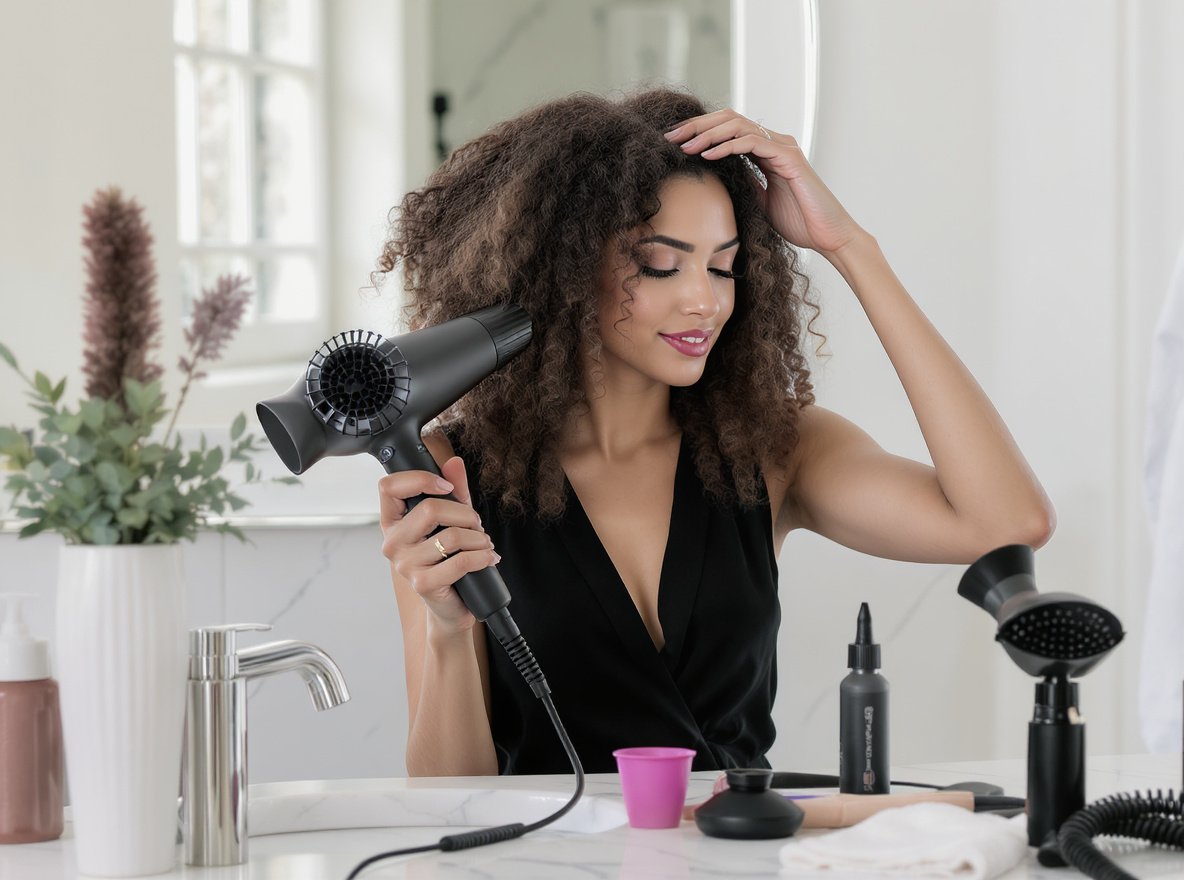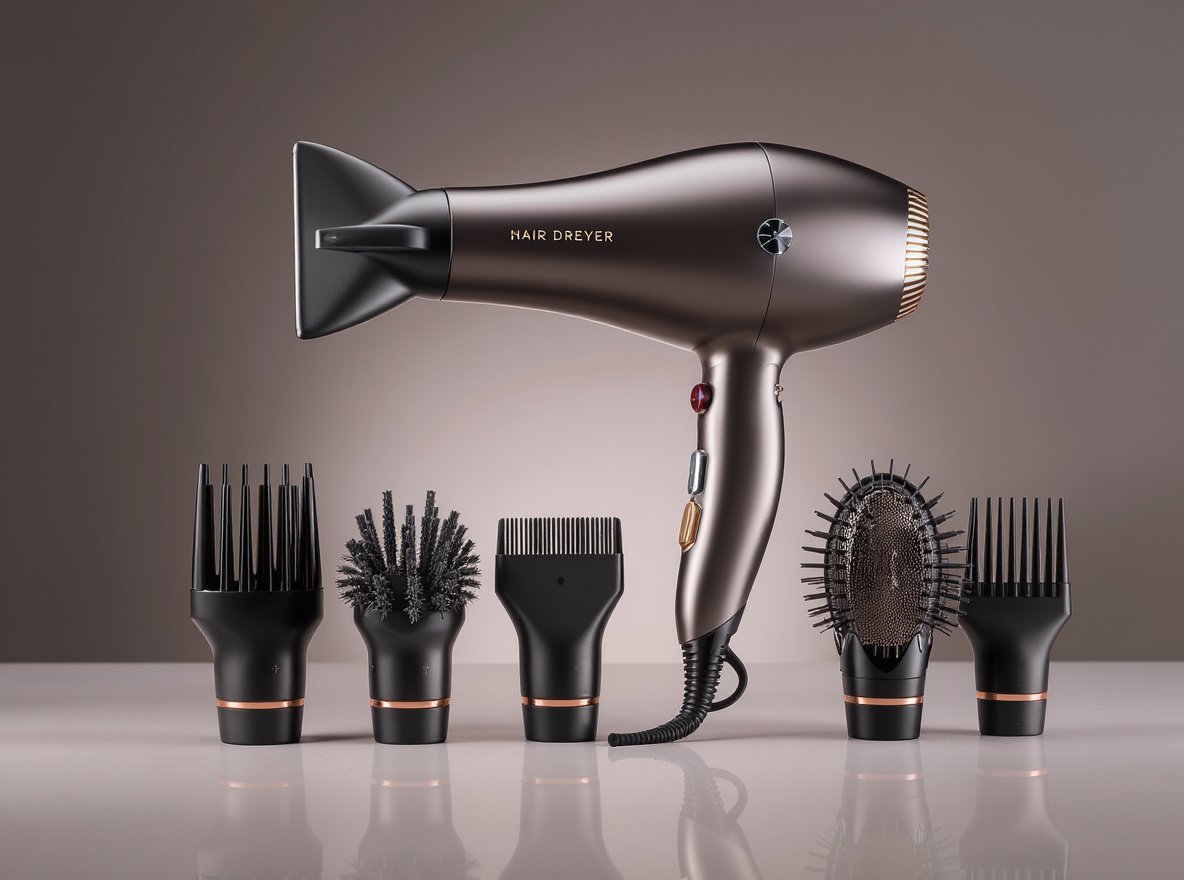Many DIY enthusiasts and professionals wonder whether they can use a hair dryer as an alternative to expensive heat guns for shrinking heat shrink tubing. While proper heat guns are specifically designed for this purpose, budget constraints and tool availability often lead people to explore household alternatives for their electrical projects.
A hair dryer can sometimes work on heat shrink tubing, but its effectiveness depends on the type of tubing and the hair dryer’s maximum temperature. For light-duty, thin-walled tubing with low shrink temperatures, a hair dryer may be sufficient. However, for most standard or heavy-duty heat shrink tubing, a hair dryer is not ideal and may not achieve full, uniform shrinkage.
Let’s explore the complete picture of using hair dryers for heat shrink applications and discover better alternatives for your electrical projects.
Table of Contents
ToggleWhat Temperature Does Heat Shrink Tubing Need?
Understanding the temperature requirements is crucial for successful heat shrink applications, as different materials require specific heat ranges to activate properly.
Standard polyolefin heat shrink tubing typically begins to shrink at 90°C to 120°C (194°F to 248°F) and reaches full shrinkage at slightly higher temperatures. PVC heat shrink tubing may require up to 150°C (300°F) for optimal results, while special low-temperature tubing can shrink at around 80°C (176°F).

Different types of heat shrink tubing have varying temperature requirements based on their material composition and intended applications:
| Tubing Material | Shrink Temperature | Typical Applications |
|---|---|---|
| Low-Temperature | 80°C (176°F) | Heat-sensitive electronics |
| Standard Polyolefin | 90-120°C (194-248°F) | General electrical connections |
| PVC | Up to 150°C (300°F) | Industrial insulation projects |
| High-Temperature | 175°C (347°F) | Automotive and harsh environments |
The shrinkage process requires sustained heat application to ensure complete contraction. Insufficient heating leads to incomplete shrinkage, resulting in loose fits that compromise protection and electrical insulation.
How Hot Do Hair Dryers Get?
The temperature output of hair dryers varies significantly based on wattage, design specifications, and intended use, with most models falling short of industrial heating requirements.
Most hair dryers reach 140°F to 250°F (60°C to 121°C) on their highest settings. Professional models may reach the upper end of this range, but consumer models often max out at the lower end, barely meeting the minimum requirements for basic heat shrink tubing.

Hair dryer temperature characteristics include:
Consumer Models:
- Low Setting: 80-100°F (27-38°C)
- Medium Setting: 120-160°F (49-71°C)
- High Setting: 140-200°F (60-93°C)
Professional Models:
- Enhanced temperature range up to 250°F (121°C)
- Better heat distribution and control
- Higher wattage for sustained performance
Even the hottest hair dryers struggle to consistently reach the temperatures needed for reliable heat shrink applications, making them a marginal solution at best.
Can Hair Dryers Successfully Shrink Heat Shrink Tubing?
The effectiveness of hair dryers for heat shrink applications depends on multiple factors, but success is limited and inconsistent.
Yes, but with significant limitations. Hair dryers can shrink some types of heat shrink tubing, especially those with lower activation temperatures and thin walls. However, the process is often slow, may result in uneven shrinkage, and may not fully activate adhesive-lined or thicker tubing.

Success Factors:
- Thin-walled tubing responds better to lower temperatures
- Low-temperature specialty tubing (80°C activation) works best
- Small sections are easier to heat uniformly
- Professional-grade hair dryers perform marginally better
Limitations:
- Wide, diffused airflow causes uneven heating
- Insufficient temperature for standard tubing
- Poor results with adhesive-lined tubing
- Time-consuming process with inconsistent outcomes
For standard or heavy-duty tubing, hair dryers are usually not hot enough to achieve complete, professional results that meet electrical safety standards.
What Are the Risks of Using Hair Dryers on Heat Shrink Tubing?
Using hair dryers for heat shrink applications carries several risks that can compromise both the project quality and equipment safety.
The primary risks include incomplete or uneven shrinkage from wide airflow patterns, potential damage to the hair dryer from prolonged high-heat operation, and reduced durability since hair dryers aren’t designed for sustained industrial tasks.

Performance Risks:
- Incomplete shrinkage compromises electrical insulation
- Uneven heating creates weak spots in the tubing
- Patchy results from diffused airflow patterns
- Failure to activate adhesive in lined tubing
Equipment Risks:
- Motor damage from continuous high-heat operation
- Overheating of internal components
- Premature failure of heating elements
- Potential fire hazard from overuse
Safety Considerations:
- Risk of burning tubing or surrounding materials
- Inconsistent results may lead to electrical failures
- Professional liability issues for commercial applications
Hair dryers simply weren’t engineered for the sustained, high-temperature demands of heat shrink applications, making them unreliable for critical electrical work.
What Are Better Alternatives to Hair Dryers for Heat Shrink Tubing?
Several alternatives offer superior performance and reliability compared to hair dryers for heat shrink applications.
Heat guns remain the gold standard, offering precise temperature control and focused airflow. Most heat guns reach 100°C to 600°C (212°F to 1112°F), suitable for all types of heat shrink tubing. Other effective alternatives include butane torches, soldering irons, and hot air rework stations.

Professional Solutions:
- Heat Guns: Variable temperature control with concentrated airflow
- Hot Air Rework Stations: Precise temperature control for electronics
- Industrial Heat Chambers: Consistent results for high-volume applications
Accessible Alternatives:
- Butane/Propane Torches: Quick and effective, requires careful technique
- Soldering Irons: Useful for small sections without direct contact
- Lighter Flames: Emergency solution for minimal applications
- Hot Water: Safe method for temperature-sensitive components
| Method | Temperature Range | Best Applications | Reliability |
|---|---|---|---|
| Heat Gun | 100-600°C | All professional work | Excellent |
| Torch | 1000°C+ | Quick field repairs | Good |
| Hot Air Station | 100-500°C | Electronics work | Excellent |
| Hair Dryer | 60-121°C | Light-duty only | Poor |
Should Businesses Use Hair Dryers for Heat Shrink Applications?
For businesses and professional applications, hair dryers are strongly discouraged for heat shrink tubing work due to quality and reliability concerns.
No, businesses should not rely on hair dryers for professional or high-volume heat shrink applications. Hair dryers are not designed for this purpose, may not deliver consistent results, and can lead to equipment failure or subpar work quality that compromises customer satisfaction and safety standards.

Business Considerations:
- Quality Control: Inconsistent results damage professional reputation
- Productivity: Slow, inefficient process wastes labor costs
- Liability: Poor connections may cause electrical failures
- Tool Longevity: Hair dryers fail quickly under continuous use
Professional Standards:
- Electrical codes require reliable connections
- Customer expectations demand consistent quality
- Insurance may not cover failures from improper tools
- Warranty claims increase with substandard work
For businesses seeking reliable tools that deliver professional results, investing in quality equipment ensures customer satisfaction and long-term success. Consider exploring our range of high-performance solutions designed for various industrial applications.
How Do Professional Heat Guns Compare to Hair Dryers?
The differences between professional heat guns and hair dryers extend far beyond temperature output, encompassing design, durability, and application suitability.
Professional heat guns offer superior temperature control, focused airflow, and industrial durability compared to hair dryers. While hair dryers max out at 140-250°F (60-121°C), heat guns reach 212-1112°F (100-600°C) with precise control and concentrated heat delivery.

Detailed Comparison:
| Feature | Hair Dryer | Heat Gun |
|---|---|---|
| Max Temperature | 140-250°F (60-121°C) | 212-1112°F (100-600°C) |
| Airflow Focus | Wide, diffused | Narrow, concentrated |
| Temperature Control | Basic settings | Variable, precise |
| Durability | Personal use design | Continuous industrial use |
| Application Quality | Inconsistent, slow | Fast, professional, uniform |
| Heat Distribution | Uneven | Controlled and focused |
Professional Advantages:
- Consistent temperature delivery across work sessions
- Multiple nozzle attachments for specific applications
- Digital temperature displays for precision work
- Built-in safety features for industrial environments
The investment in professional tools pays dividends through improved efficiency, consistent results, and reduced rework costs.
Are There Specific Hair Dryer Models That Work Better?
While some hair dryer models perform marginally better than others for heat shrink applications, none are specifically designed for this purpose.
Professional hair dryers with higher wattage and maximum temperature settings may perform slightly better than consumer models, but they still fall short of the performance and reliability of a heat gun. No hair dryer is specifically designed for heat shrink tubing, so even the best models are only a workaround for light-duty, occasional use.

Better-Performing Features:
- High Wattage: 1800W+ models reach higher temperatures
- Professional Design: Salon-grade construction offers better durability
- Multiple Heat Settings: Improved temperature control options
- Concentrator Nozzles: Focus airflow for better heat direction
Recommended Specifications:
- Minimum 1800W power output
- Maximum temperature rating above 200°F (93°C)
- Variable speed and temperature controls
- Professional-grade motor design
However, even the best hair dryers remain a compromise solution. The cost of high-end professional hair dryers often approaches that of dedicated heat guns, making purpose-built tools the more logical investment for consistent results.
For businesses requiring reliable performance across various applications, our P1C high-speed hair dryer at https://laifex.com/p1c-hair-dryer/ offers superior temperature control and durability, though dedicated heat guns remain the preferred choice for heat shrink applications.
Summary
While hair dryers can sometimes shrink heat shrink tubing, they’re not recommended for most applications due to temperature limitations, risk of uneven results, and potential equipment damage. Professional heat guns offer superior performance, reliability, and safety for all heat shrink applications. For businesses and frequent users, investing in proper tools ensures consistent quality and long-term cost savings.

Whether you’re a professional seeking reliable tools or a business looking to expand your product offerings, explore our comprehensive selection of high-performance equipment designed for various industrial applications. Contact us for wholesale pricing and bulk orders tailored to your specific operational needs.



